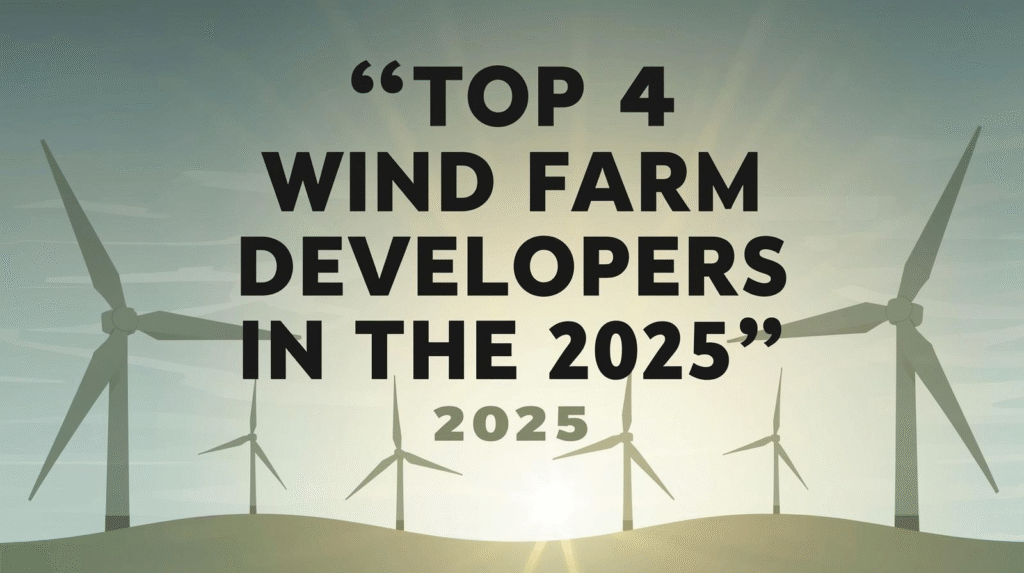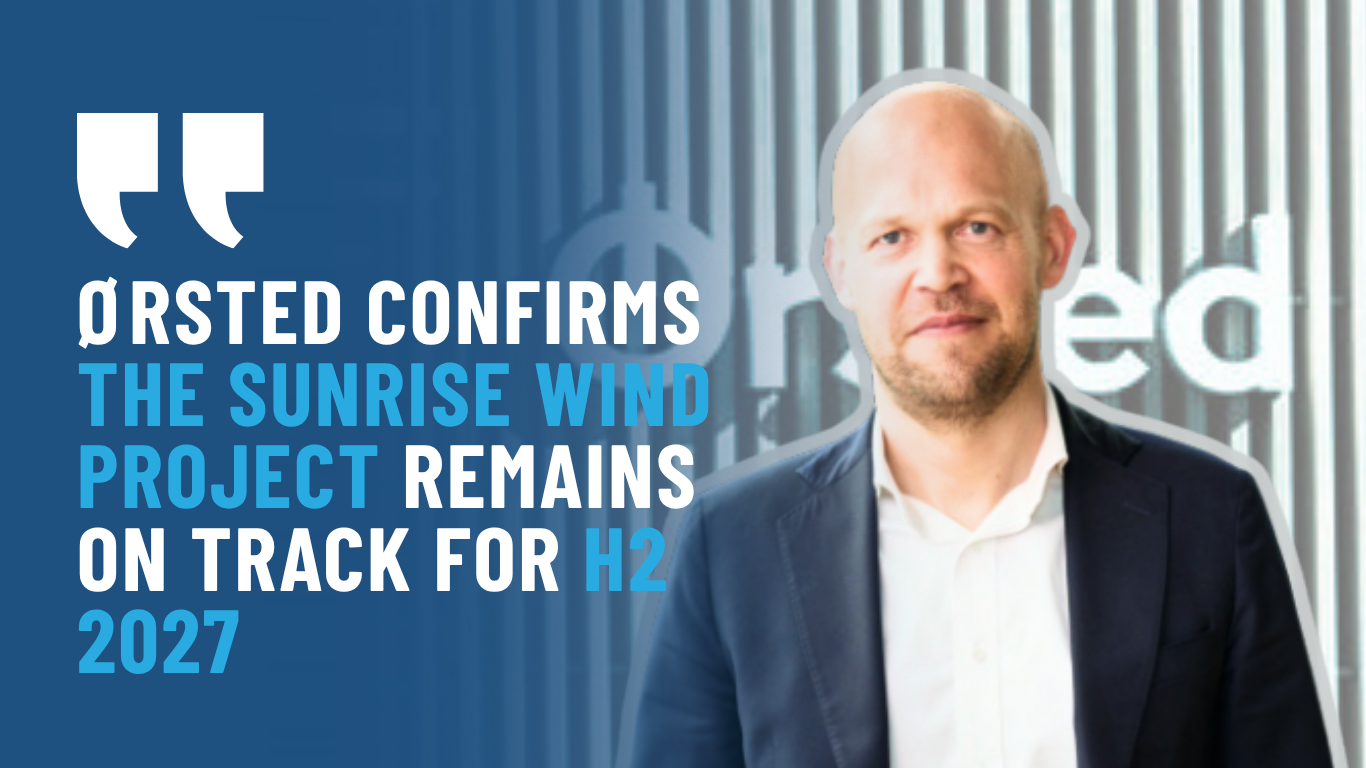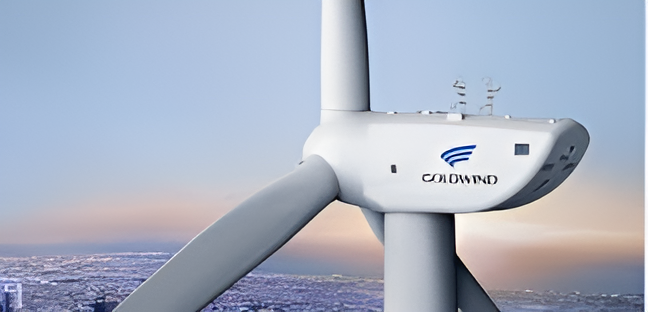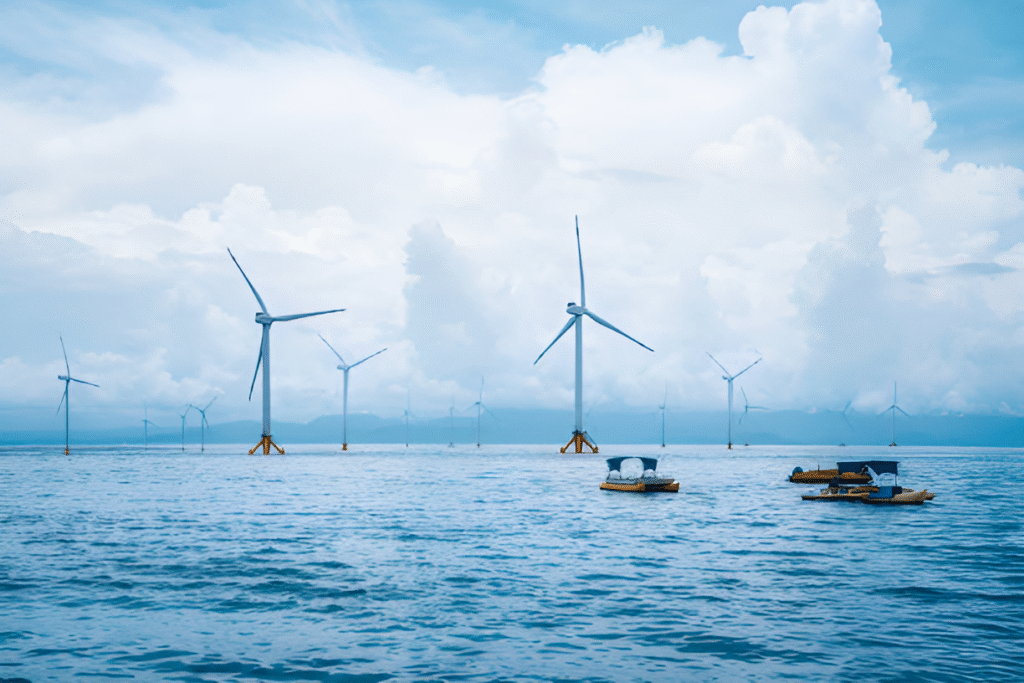Wind Energy Engineer Career Path
Introduction
So, do you want to be a wind energy engineer in 2025? This is great, because the renewable energy sector is rapidly growing, with wind energy leading the industry. In this guide, we will cover everything from the necessary basic education to your future employment opportunities in your area, including the appropriate training and expected earnings. Let’s get started.
To begin with, 2025 will be the best year so far for wind energy engineers—and there’s no better moment to begin a career in renewable energy. With governments and businesses trying to meet their clean energy targets, the need for wind energy specialists is unprecedented. Picture yourself designing massive wind energy turbines, studying complex analytics, and delivering clean energy to millions of households, while enjoying a great and secure income.
If you’re a recent engineering graduate or looking to begin a career with a true purpose, working as a wind energy engineer will provide you with opportunities that no other field will offer. There is a lot of potential in the industry in the US, Europe, and China, and now in many other places, with projects that range from offshore wind farms to AI turbine optimization.
Step by step, you will find out how to become a wind energy engineer in 2025, the best degrees, leading educational institutions, and other relevant details, including the best degrees, top universities, certifications, training programs, and career paths that will set you apart in one of the fastest-growing industries on the planet.
Step 1: Understanding the Function of Wind Energy Engineers
Prior to pursuing this profession, it is helpful to know what a wind energy engineer does. These engineers design, develop, evaluate, and sustain the systems that enable wind turbines and wind farms to function efficiently. This incorporates different branches of engineering, such as
Mechanical Engineering: Deals with the design of turbines and the blades, as well as the aerodynamics and structural integrity.
Electrical Engineering: Handles the generation of electricity as well as grid integration and electrical protection.
Civil Engineering: Oversees the foundation and site infrastructure and the construction logistics.
Sometime Renewable energy engineer also concentrates on specialized activities such as automated system controls, project execution, and assessment of ecological effects.
The position requires a blend of theoretical and applied aspects, making it stimulating as well as rewarding. A wind energy engineer works with advanced technology, collaborates with various disciplines, and helps develop solutions that make clean energy available to many households.
Step 2: Establish your foundation in high school
Most people start to think about becoming a wind energy engineer when they get to high school. In order for everything to succeed in this fast-evolving area, it is important to build a solid base in the STEM subjects.
Concentrate on:
Advanced mathematics: Also includes calculus, trigonometry, and applied math, and is fundamental for turbine mechanics and energy calculations.
Physics and chemistry: Fundamental for the comprehension of aerodynamics, material properties, and energy systems.
Computer science or programming: Vital for simulation, data analysis, and the control systems of the modern wind turbines.
On top of your studies, try to get involved in robotics clubs, science fairs, and engineering competitions. All of these activities provide useful engineering and real-world hands-on principles.
This gusto is what most colleges and future employers look for. Extracurricular activities provide the most valuable skills that students wouldn’t get from their books.
Step 3: Pursue a Relevant Bachelor’s Degree
This is a crucial step in your path to being a wind energy engineer. With four years to obtain a bachelor’s degree in the proper field of study, you’ll acquire the theoretical and practical competencies necessary to conceptualize, create, and upkeep wind turbine and wind farm systems.
Primary Degree Options:
Mechanical Engineering: The most popular route centers on turbine design and the heating of mechanical systems and the associated aerodynamics.
Electrical Engineering: The best fit for those who have an interest in the generation of electricity and its control systems and integration to the grid.
Civil Engineering: Centers on the geo-structural framework and geo-structural works and the integrity of the structures.
Renewable Energy Engineering: This is a new offering in many universities, synergizing many different disciplines.
Choosing the Right Program:
Target institutions with reputable engineering disciplines, wind energy centers of excellence, or engineering-specific research laboratories. These institutions provide state-of-the-art facilities, practical engineering applications, and collaborations with enterprises to improve your prospects.
9 Best Universities For Wind Energy Programs (by Location)

Here’s a state-by-state snapshot of the best programs, tuition, and opportunities, arranged for renewable energy engineer degree requirements.
| State & University | Degree / Program | Credits & Duration | Cost | Program Highlights & Facilities |
| Massachusetts – UMass Amherst | Bachelor’s in Mechanical/Renewable Energy Engineering | 120 credits, 4 years | $32,000–$50,000 / year | Home to the first U.S. wind energy research center; hands-on labs and strong industry partnerships |
| Iowa – Iowa State University | Graduate Wind Energy Science, Engineering & Policy (WESEP) | 36 credits, 2 years | $15,000–$20,000 / year | Multidisciplinary program with real turbine project experience; graduate specialization |
| Iowa – Iowa Lakes Community College | Wind Energy & Turbine Technology Certificate | 32 credits, 1–2 years | $4,000–$6,000 total | Hands-on training and certifications; fast track to technician roles |
| Colorado – University of Colorado Boulder | Bachelor’s in Mechanical Engineering (Renewable Energy Focus) | 128 credits, 4 years | $18,000–$42,000 / year | Renewable energy specialization with research opportunities and proximity to wind farms |
| Colorado – Northeastern Junior College | Wind Turbine Technician Certification | 28 credits, 1 year | $5,000–$7,000 total | Practical, job-ready wind technician training in an active wind energy region |
| Texas – Texas Tech University | Bachelor’s in Mechanical Engineering | 125 credits, 4 years | $10,000–$25,000 / year | Mechanical engineering program with wind research focus; strong state-wide industry connections |
| Texas – University of Texas at Dallas (UTD Wind) | Bachelor’s in Mechanical Engineering (Wind Energy Specialization) | 120 credits, 4 years | $12,000–$28,000 / year | Dedicated wind energy research programs; partnerships with turbine manufacturers |
| Indiana – Trine University | Bachelor’s in Energy Engineering | 122 credits, 4 years | $35,000–$45,000 / year | Focus on energy production, distribution, sustainability, and practical applications |
| Washington – Washington State University | Bachelor’s in Mechanical Engineering (Energy Focus) | 126 credits, 4 years | $16,000–$38,000 / year | Full energy program including wind, solar, and geothermal; strong research partnerships |
Step 4: Wind Energy Enginner Essential Skills and Training
Once you have your degree, start building the skills that will help you become a great wind power engineer. This job mixes different fields, so knowing stuff and getting experience are both important.
Key Technical Skills:
- Mechanical Skills: How turbines work, how to check if they’re built right, and how air moves around them.
- Electrical Skills: Power grids and how to hook up to them, plus how to control everything.
- Software and Data: Learn things like MATLAB, AutoCAD, SCADA, and how to use computers to understand fluids.
- Emerging Technology: like using AI to make turbines better, ways to fix things before they break, and using the internet to connect wind farms.
Soft Skills That Help:
- Be able to figure out problems and think hard when turbines cause issues.
- Work well with others and talk to people from different fields.
- Know how to run projects to put up wind farms.
Training and Certificates:
- GWO Safety Training: You need it if working with turbines on land or water.
- NABCEP Certificate: Shows you know about power from nature and how to do things right.
- Online Classes: Sites like Coursera, edX, and MIT have classes about wind power, turbines, and how to handle energy.
- Workshops and Bootcamps: Short classes that let you play with real turbines and see how they work.
Quick Tip: Mix learning in class with hands-on training. A lot of companies work with schools to offer programs, internships, and projects. This not only makes you better at your job but also helps you meet people in the wind energy world.
By getting these technical and soft skills and certificates, you’ll be well-prepared and ready for entry-level roles and can grow fast in the renewable energy engineer world.
Step 5: Gain Real-World Experience Through Internships and Entry-Level Jobs
Seriously, start trying to work in wind energy before you even graduate. A lot of wind turbine engineers get hired full-time after doing an internship. Companies love to hire students who’ve already shown they can do the wind power engineer job. Getting that experience can really help you stand out from other people applying. Internships let you put what you’ve learned to work.
You might help turbines work better, check out possible sites, study data, or even help with big renewable energy projects that are changing how the country gets its power.
3 Top Companies Offering Wind Energy Internships for students & Entry-Level Jobs in 2025
1. Vestas – Powering the Future of Wind
Headquarters: Colorado (nationwide facilities)
Roles: Design Engineer, Field Service Engineer, Project Manager, Research Engineer
Salary Range: $65,000–$120,000
Where They’re Hiring: Colorado, Texas, California, New York, Illinois
Why it’s great: Vestas makes the most wind turbines in the world. If you work there, you’ll see all the newest stuff first, from how they design turbines to how they keep them running great.
2. GE Renewable Energy – Engineering a Cleaner Tomorrow
Headquarters: They have a bunch of places
Roles: Mechanical Engineer, Electrical Engineer, Controls Engineer, Field Engineer
Salary Range: $70,000–$130,000
Where They’re Hiring: Massachusetts, Texas, Colorado, Illinois, Washington
Why It’s great: This is part of General Electric, and they spend a lot on new tech, digital wind stuff, and making the grid better. They’re known for giving good training and chances to move up for a renewable energy engineer role.
3. Siemens Gamesa – Shaping the Offshore Revolution
Headquarters: Lots of spots in the U.S.
Roles: Systems Engineer, Design Engineer, Service Technician, Project Coordinator
Salary Range: $60,000–$115,000
Where They’re Hiring: Texas, Oklahoma, Iowa, California, New York
Reason of Greatness: They’re big in both offshore and onshore wind. They care about being sustainable, being diverse, and making the next big thing in turbines.
Top 4 Wind Farm Developers in the U.S. (2025)
1.NextEra Energy – Clean Energy Giant
Roles: Wind Power Engineer, Operations Manager, Maintenance Engineer, Project Developer
Salary Range: $65,000–$125,000
Where They’re Hiring: Texas, Wyoming, New Mexico, Colorado, Iowa, Massachusetts
Why It’s Great: NextEra runs some huge wind farms. You can really grow your career in their renewable energy engineer program.
2. Duke Energy – Utility with a Renewable Edge
Headquarters: North Carolina
Roles: Project Wind turbine Engineer, Systems Engineer, Wind Power Engineer, or Operations Specialist
Salary: $60,000–$110,000
Where They’re Hiring: North Carolina, South Carolina, Florida, Ohio, and Indiana. Why It’s Great: They’re becoming greener quickly. They’re putting money into wind and trying to get to net-zero emissions.
3. Ørsted – Offshore Pioneer in the U.S.
Headquarters: New York (for their U.S. stuff)
Roles: Wind Engineer, Maintenance Technician, Project Manager, Energy Analyst
Salary: $62,000–$120,000
Where They’re Hiring: New York, Massachusetts, California, Texas, and Illinois.
Why It’s Great: They’re the best at offshore wind development. They give great training, let you work with people from other countries, and let you see these massive projects by the coast.
4. Brookfield Renewable – Investing in the Future
Headquarters: All over the place
Roles: Operations Engineer, Maintenance Manager, Technical Specialist
Salary: $55,000–$115,000 Where They’re Hiring: California, Texas, Colorado, New Mexico, North Carolina
Why It’s Great: They mix new engineering ideas with having a lot of money. It’s good if you’re into the business side of renewable energy.
4 Best Consulting Firms in the U.S. That Hire Wind Engineers

DNV – The World’s Leading Certification & Assessment Experts
Services: Design wind farms, make sure they’re safe, and check projects
Roles: Certification Engineer, Design Consultant, Project Manager
Salary: $68,000–$130,000
Where They’re Hiring: Everywhere in the U.S.
Ramboll – A Global Wind Advisory and Environmental Design
Services: Wind engineering, planning sites, and check the environment
Roles: Wind Engineer, Site Engineer, Environmental Specialist
Salary: $65,000–$125,000
Where They’re Hiring: Everywhere in the U.S.
Services: Systems Engineer, professional at improving things, Technical Consultant
Wind energy engineer salary in the USA: $70,000–$135,000
Where They’re Hiring: Everywhere in the U.S.
Servicces: Wind Farm Engineer, Environmental Consultant, Project Manager
Salary: $62,000–$120,000
Where They’re Hiring: Everywhere in the U.S.
Quick Tip: Turn Internships Into Job Offers Most wind Power engineer who do well started as interns. Make people think highly of you by showing that you can take action, asking lots of questions, and volunteering for projects that require your highest efforts. Lots of companies will offer interns a full-time job as soon as they get out of school.
Step 6: Pursue Advanced Certifications Or Master’s Degree
Getting more education isn’t always a must, but it can totally boost your career and help you earn more. A master’s degree in things like mechanical or electrical engineering, or even renewable energy engineer, usually takes another year or two. It really gets you into the nitty-gritty of the tech stuff. It’s awesome if you’re aiming for research, development, or top-level tech jobs, even wind turbine enginer, renewable energy engineer.
A lot of those universities I talked about earlier (like Iowa State, UMass Amherst, and the University of Colorado) have cool master’s programs you can check out. There are also certifications you can get.
One is the Professional Engineer (PE) license. To get it, you gotta pass the Fundamentals of Engineering (FE) exam, get some work experience, and then pass the PE exam.
You don’t always need it, but having a PE license proves you know your stuff and can lead to better jobs or consulting work. For wind energy,
Specialized Wind Energy Certifications:
Global Wind Organization (GWO) certifications – They have certificates that everyone knows about, like Basic Safety Training, Work at Heights, Rescue, First Aid, and Wind Turbine Technician stuff. You usually need these if you’re working on-site.
AWEA (American Wind Energy Association) credentials – They have certificates that prove you’re good with wind energy systems and know all the industry rules.
Step 7: Work on Your Solf Skills
Besides school, wind energy engineers need certain skills to do well.
Technicial Sills:
- MATLAB and Simulink for modeling stuff
- CAD software like ANSYS, SolidWorks, or AutoCAD
- Python or C++ for coding and looking at data
- Knowing about fluid dynamics and aerodynamics
- Knowing about electrical systems and how they hook up to the power grid
Soft skills:
- Managing projects and talking to people
- Figuring out problems
- Working with others
Paying attention to the little things and staying safe You can get better at these skills by taking classes, using websites like Coursera or edX, and doing projects. You’ll learn a lot on the job, but getting a jump start can really help you stand out.
Step 8: Network and Keep Up with What’s Happening in Wind Energy Industry Trends
The wind energy world changes fast. Turbine aerodynamics get better, offshore farms get bigger, and there are fresh tech breakthroughs every year. Knowing the right folks and staying in the loop isn’t just a good idea—it’s how to stay on top of your game.
How to Stay Plugged In
- Join Profesiional Assoiciatiion like the American Wind Energy Association (AWEA) or CleanPower. They give you access to research, job boards, and training programs.
- Attend Renewable Energy Seminers, Conferences and Webniars — It’s a great way to meet possible bosses, see new gear, and learn what’s going on with policies around the world.
- Follow International Journal and Publications — like Windpower Monthly or Wind News Today. That way, you’ll know about projects and policy changes.
- Get involved on LinkedIn and online energy forums—Join groups, share what you know, and link up with recruiters and engineers at companies you’d love to work for.
Pro Tip: Networking isn’t just about finding a job; it’s about staying visible and knowing what’s up. Often, jobs get filled by people the company already knows or through someone’s recommendation before they even get posted.
5 Major Challenges of a Wind Energy Career
Wind energy is rewarding. You’re helping the planet, cutting pollution, and powering homes with clean energy. Still, it has its difficulties, so let’s get into it.
1. Physical Demands and Safety Risks
Wind turbines can be super tall, and wind turbine engineer often work high up and in bad weather. The Truth: Not everyone climbs turbines, but you might have to visit sites or work outside.
How to Handle It: Stay in shape, follow safety rules, and wear the right gear. If you don’t like heights, try focusing on design or simulation.
2. Long Projects Timeline
Usually Wind farms can take 5–7 years from start to finish. They can get delayed by money issues or approvals. The Truth: It can feel slow, but every step counts.
How to Handle It: Learn at each stage and celebrate small wins. Your patience will pay off when the turbines finally turn.
3. Weather and Travel Challenges
Wind farms are often far away in places with crazy weather. The Truth: It’s not for everyone, but some love it.
How to Handle It: Be ready to adapt. If you don’t want to travel much, think about analytical or research positions.
4. Rules and Policies Uncertainty
Government policies and incentives can change fast, which affects projects and jobs. The Truth: The wind industry has had ups and downs because of politics.
How to Handle It: Stay updated on policy changes and have skills that work in any green energy job.
5. Tech Changes Fast
It’s reality that Wind energy tech is getting better fast with new sensors and AI. The Truth: What you learn today might be old news in a few years.
How to Handle It: Always be ready to learn. Go to workshops, get new certificates, and stay curious. Never stop learning.
The Big picture: Why It’s Worth It
Wind energy is blowing up as one of the quickest-growing parts of the energy biz. Stats show the world market for wind energy keeps getting bigger, so there’s a serious need for good engineers. Jobs are safe, pay is good (think $55,000 to $70,000 to start, and way over $100,000 as you get better), and you get to help the environment.
Final Thoughts—Your careers in Wind Energy Starts Now
Becoming a wind energy engineer is more than just getting a diploma—it’s about helping the future of clean energy. This job path is more like a marathon, not a quick race. From getting good at STEM subjects in high school to getting your degree, getting real-world experience, and meeting people in the industry, each thing you do gets you closer to creating a greener planet. The wind energy business is growing super-fast, thanks to goals for the climate worldwide, money from the government, and new tech.
Engineers who are good at what they do, can change when needed, and care about the environment are really wanted—and what they do truly helps. Keep in mind: the best wind engineers are the ones who are always wondering, always learning, and always getting better. Doesn’t matter if you’re making turbines work better, planning systems out at sea, or taking the lead on green projects, what you do can truly power lots of houses and help the earth move to sustainable energy.
What You Can Do Now: Begin today. Look at school programs, get involved in energy groups, and try to get internships with big companies . Every skill you learn helps you get closer to a great career and get renewable energy jobs USA 2025 that will have a big impact and last.
The wind industry is set for the next group of thinkers. Are you prepared to join?









